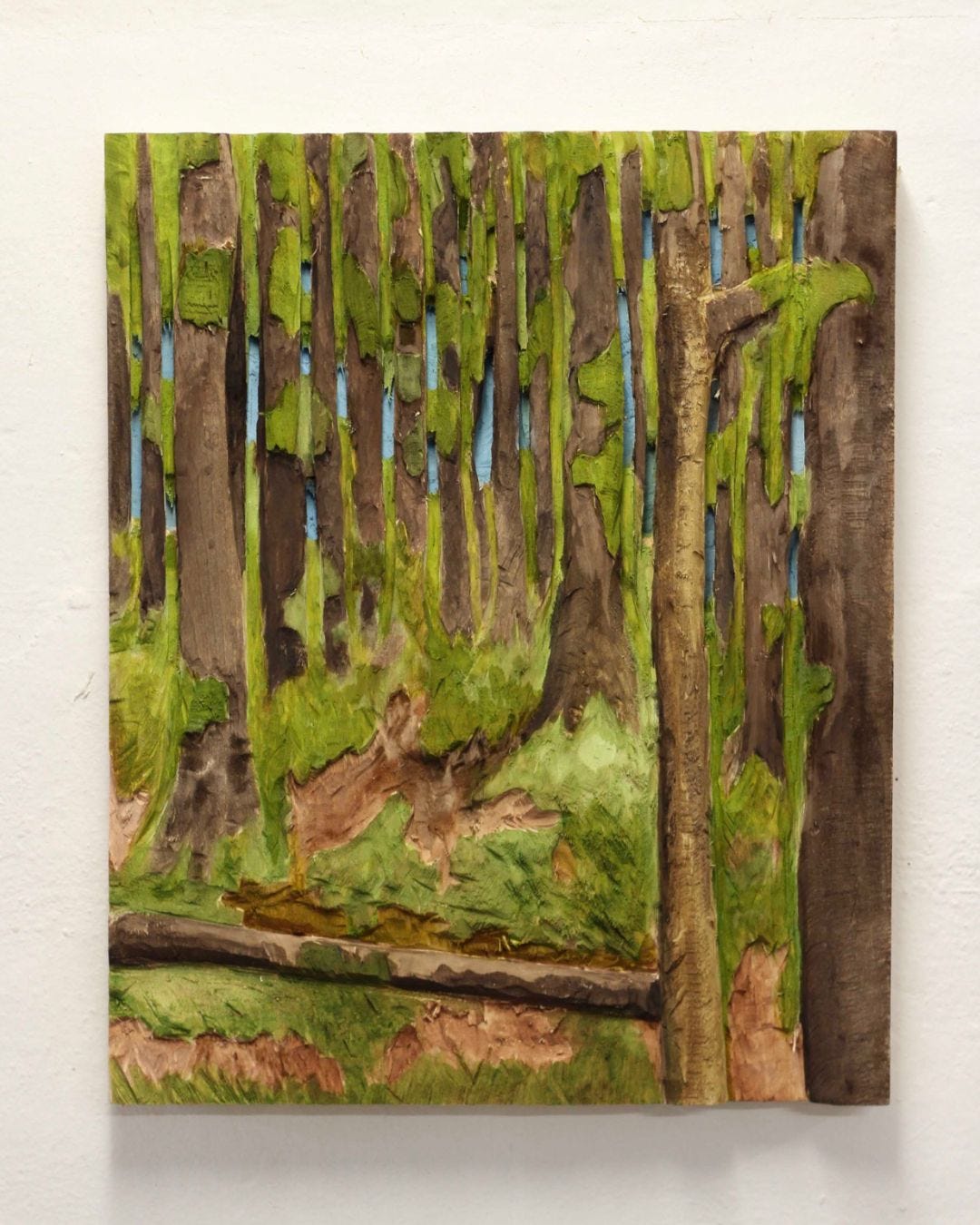Tina Schneider: What This Artist Sees in Dead Trees Might Change How You Look at Wood Forever
German sculptor Tina Schneider explores vitality, imperfection, and memory through raw wood figures - where animal, human, and decay converge.
Carving Vitality: Tina Schneider and the Life Inside Wood
When decay isn’t an ending - but a second language.
By Ernst Koslitsch - artist & co-founder of Munchies Art Club
Featuring the wood sculptures of Tina Schneider, Germany
What Makes a Sculpture Feel Alive?
Contemporary sculpture is saturated with polish, perfection, and, increasingly, 3D renderings. So what happens when an artist turns to something ancient - wood - and refuses to smooth it out? When they carve not for illusion but for essence?
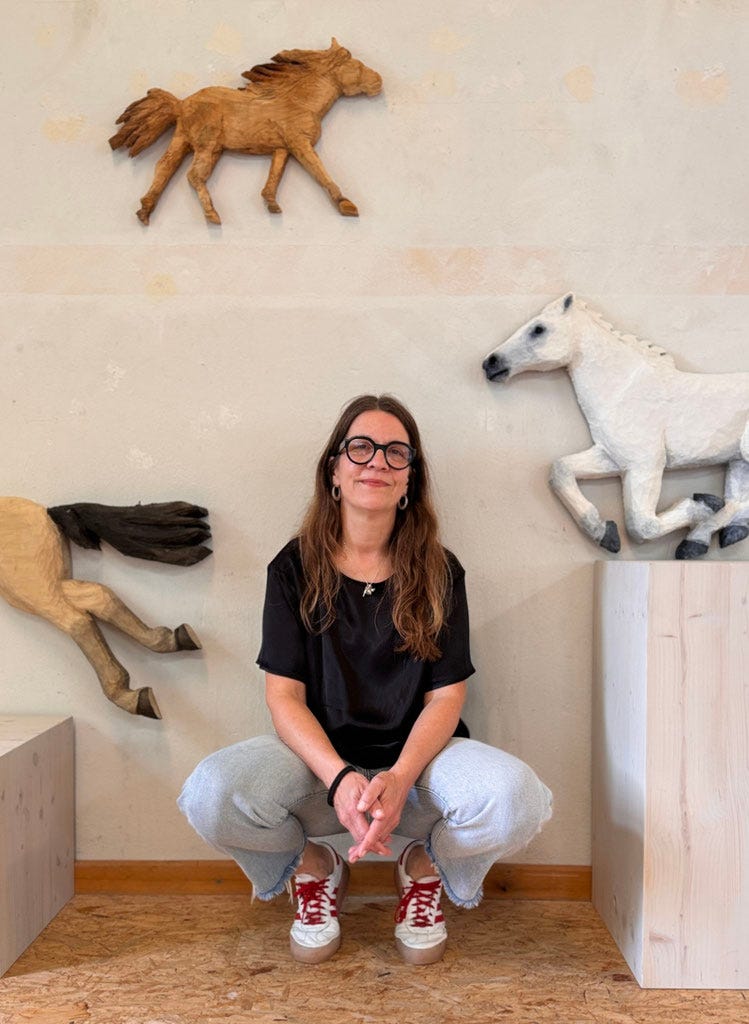
Enter Tina Schneider, a sculptor based in Germany, whose raw wooden figures-animal, human, ghostlike - don’t aim to impress. They aim to remember.
And in doing so, they ask something more difficult of us: Can you sit with what’s fading, fractured, and still somehow alive?
🪵 Why Wood Matters
Tina Schneider studied at the Stuttgart Academy of Fine Arts under Henk Visch, Moritz Baumgartl and Sotirios Michou.
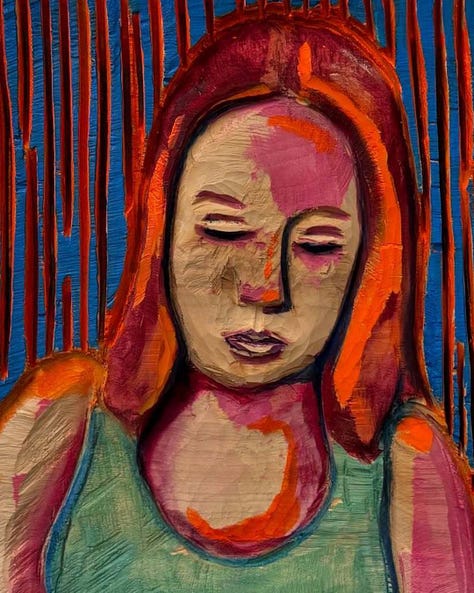

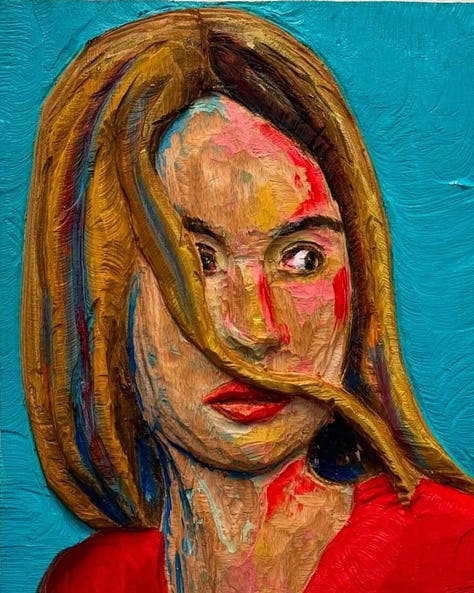
Her chosen medium, wood, is not simply material; it’s collaborator. It ages, cracks, groans. It holds memory. It resists the artist’s will. And Schneider welcomes that resistance.
“No flawlessness, no wishful thinking of something perfect,” her work seems to say.
Her sculptures don’t erase the material’s imperfections; they accentuate them. Veins remain visible. Cuts are intentional. The viewer is not presented with a polished object, but a living surface, a breathing relic.
Themes That Echo
Schneider’s recurring motifs: twisted limbs, deer heads, plant forms, mythic hybrids, speak to a vitality that’s not dependent on youth or bloom.
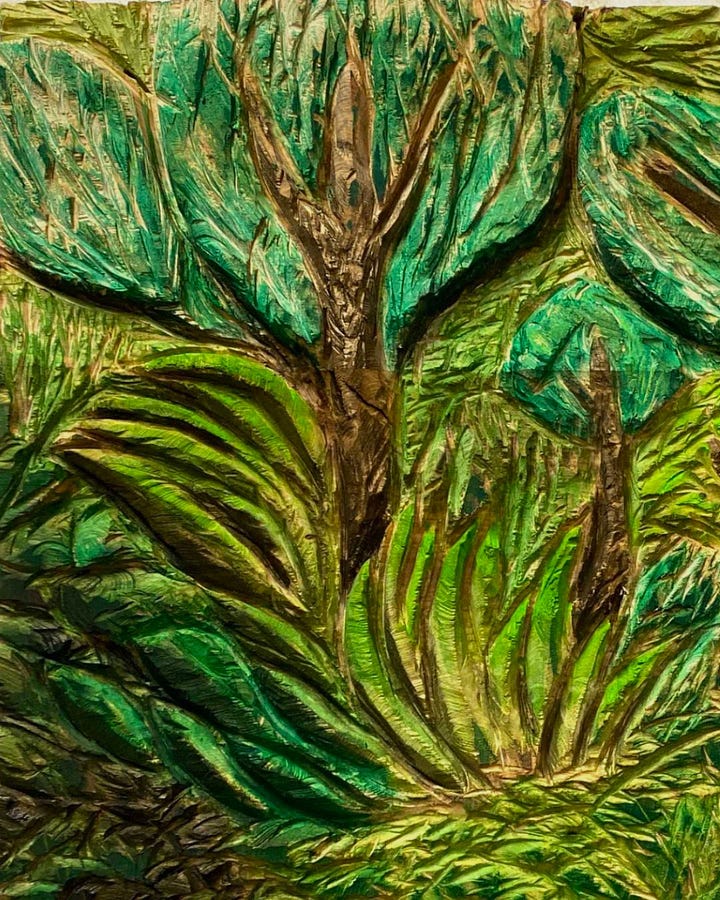
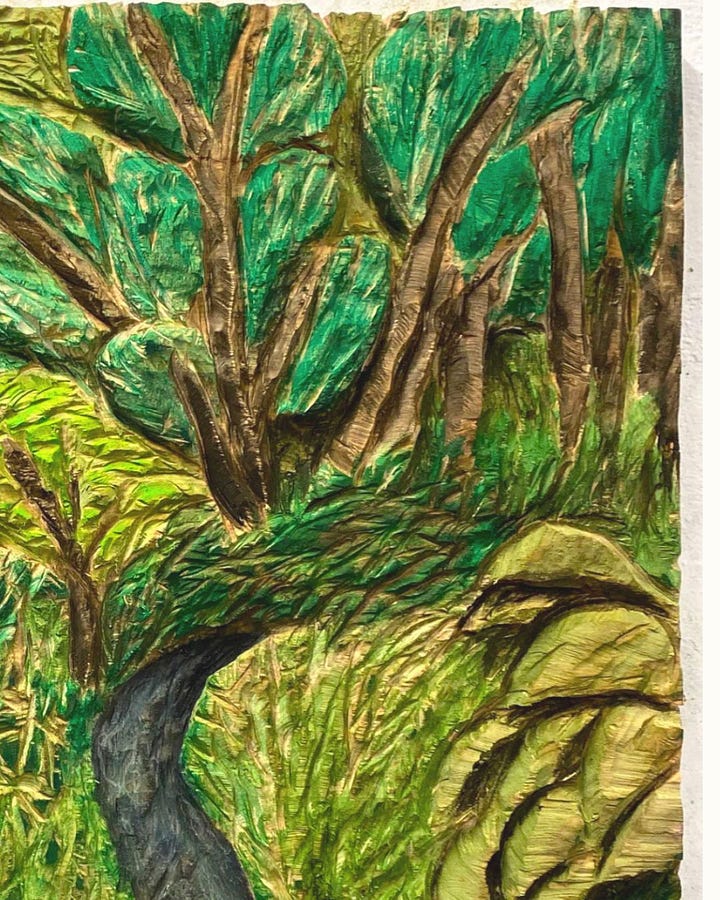
She is interested in life, yes, but not the glossy kind. Instead, she sculpts the in - between moments: the gesture before disappearance, the form mid-transformation.
These aren’t ruins. They’re thresholds.
Themes in Tina Schneider’s Work:
Vitality through decay
Nature without idealization
The tension between beast and human
Imperfection as inner truth
Material memory and presence
Contemporary Positioning: Where Tina Schneider Belongs
Tina Schneider’s work resonates in the same universe as Louise Bourgeois, Berlinde De Bruyckere, or Magdalena Abakanowicz, but with a uniquely grounded humility.

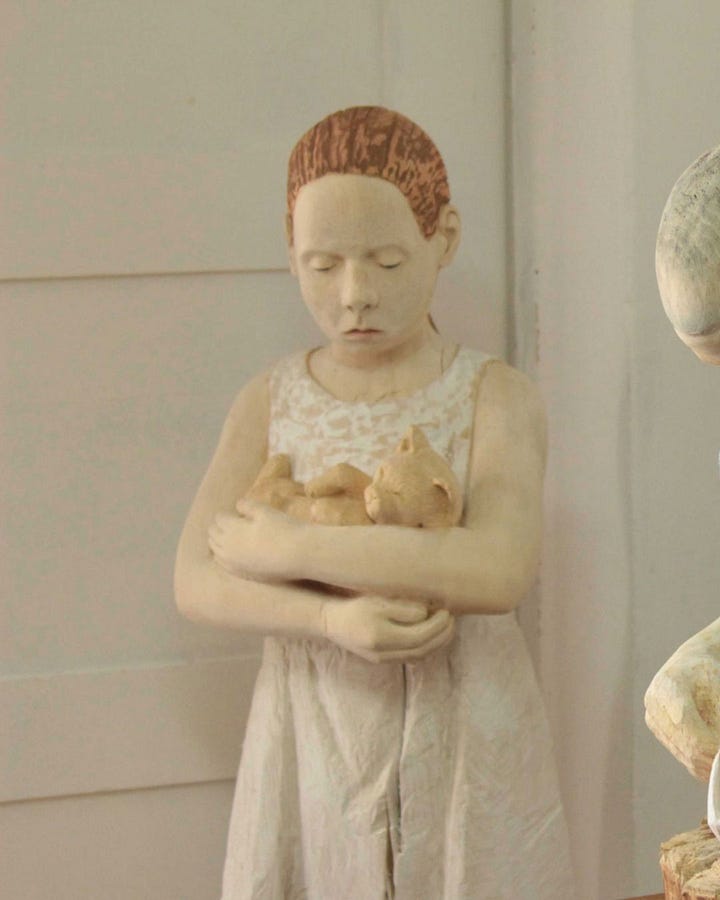
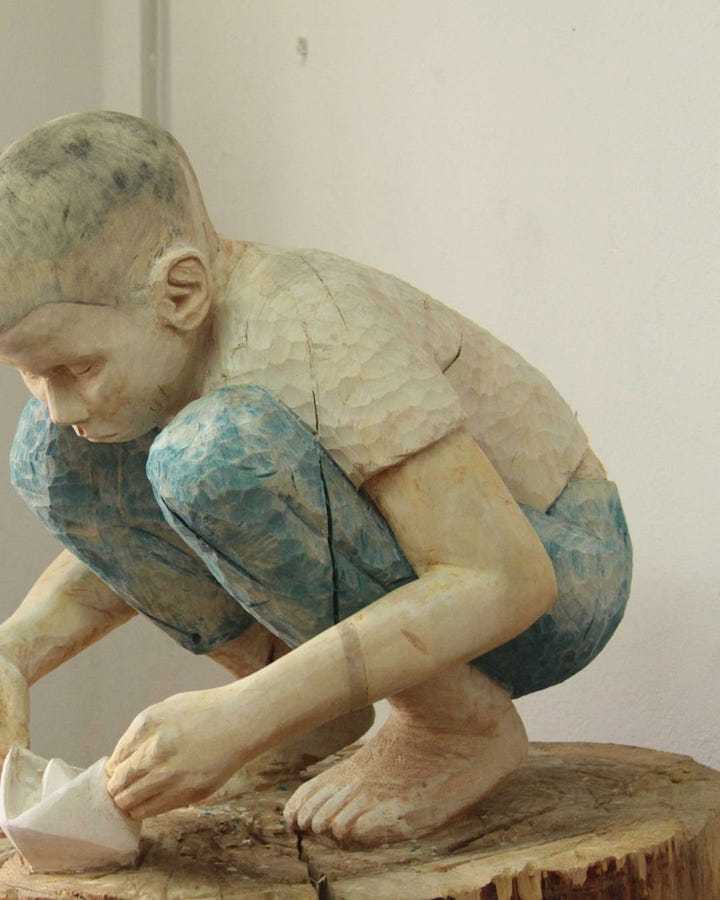
There is no grandeur here. Instead, her sculptures carry the quiet gravity of something that never asked to be seen but insists on being felt.
While many contemporary artists turn toward AI and abstraction, Schneider goes deeper into the organic, offering something AI cannot replicate: tactile truth. Her works are not just seen - they're witnessed.
This makes her a compelling voice in today’s shifting conversation around embodiment, impermanence, and eco-consciousness in sculpture.
Visual Examples (For Readers Who Want to See the Pulse)
Some recent works include:
A humanoid form with deer-like features, carved with deep notches that suggest weathering and wear
A plant form in decay - petals folded inward, not outward
Limbs with just enough gesture to suggest movement, yet caught in stillness
These are not simply animal sculptures. They are gestures made permanent, each one whispering: I was here. I still am.
Author’s Reflection
As an artist, I find Tina Schneider’s refusal to flatter deeply refreshing. In an age of surface obsession, her figures offer substance. Not a spectacle, but a slow burn. You don’t scroll past them. You stay.
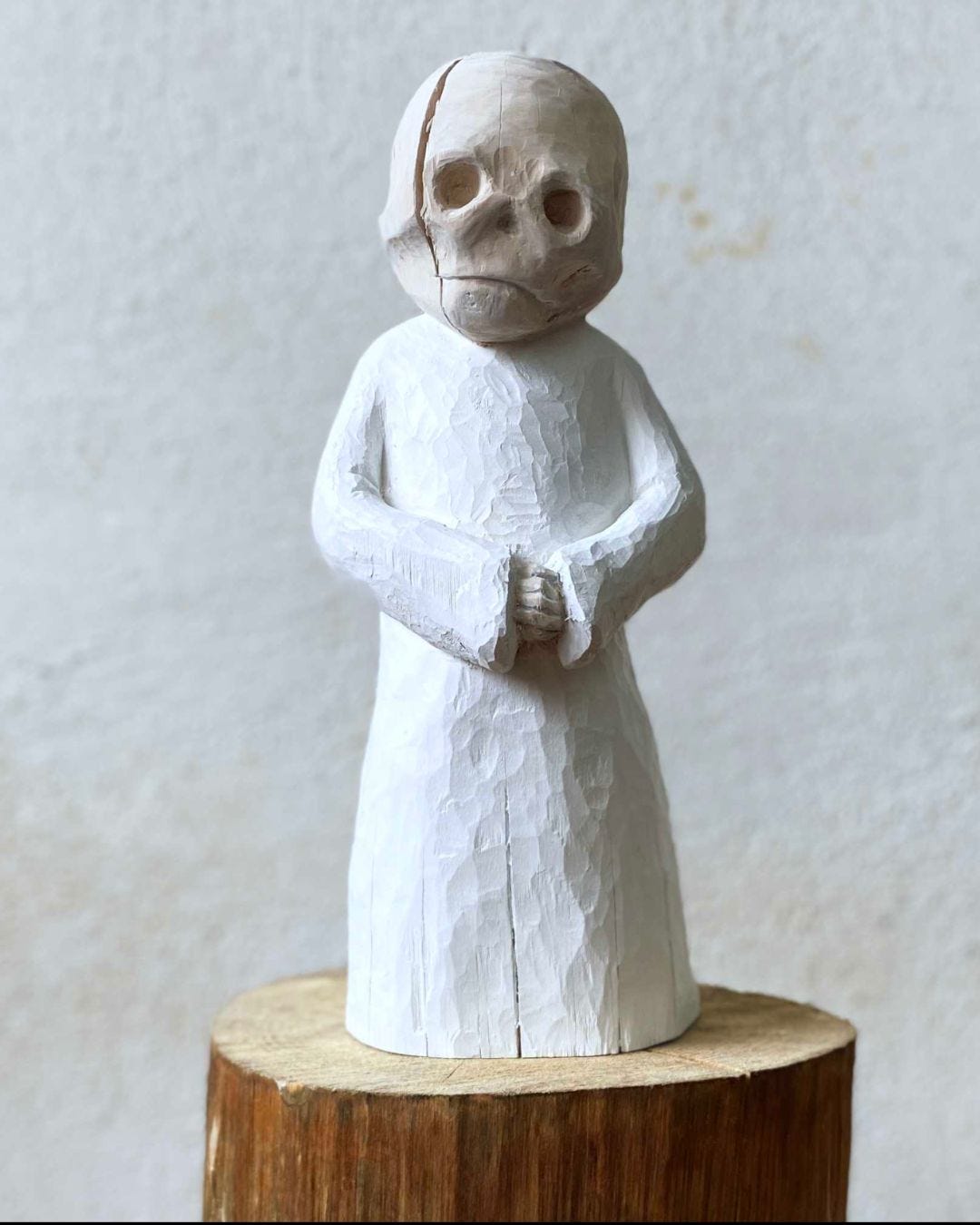
Her work teaches something that applies beyond sculpture:
Vitality doesn’t always roar. Sometimes, it barely breathes. And that’s enough.
Let’s Talk
Which piece of Tina Schneider’s work speaks to you most?
Do you find presence in decay—or does it unsettle you?
🪓 Follow Tina Schneider on Instagram and show her that quiet work still cuts deep.
💬 Drop your thoughts in the comments: Do we need more imperfection in art?
About the Author
Ernst Koslitsch is a Vienna-based artist, writer, and co-founder of Munchies Art Club. His work has been shown across Europe and includes commissions for the National Museum of Bosnia and the Esterházy Collection. He writes on sculpture, digital art culture, and slow aesthetics.
More Artist on our Follower List
Giorgos Gerontides: The Artist Who Inflates Reality Until It Pops
Giorgos Gerontides: The Artist Who Inflates Reality Until It Pops
Can a water gun hold meaning? For Kalan Strauss, it does
Kalan Strauss: Playful Objects, Sharp Critique




